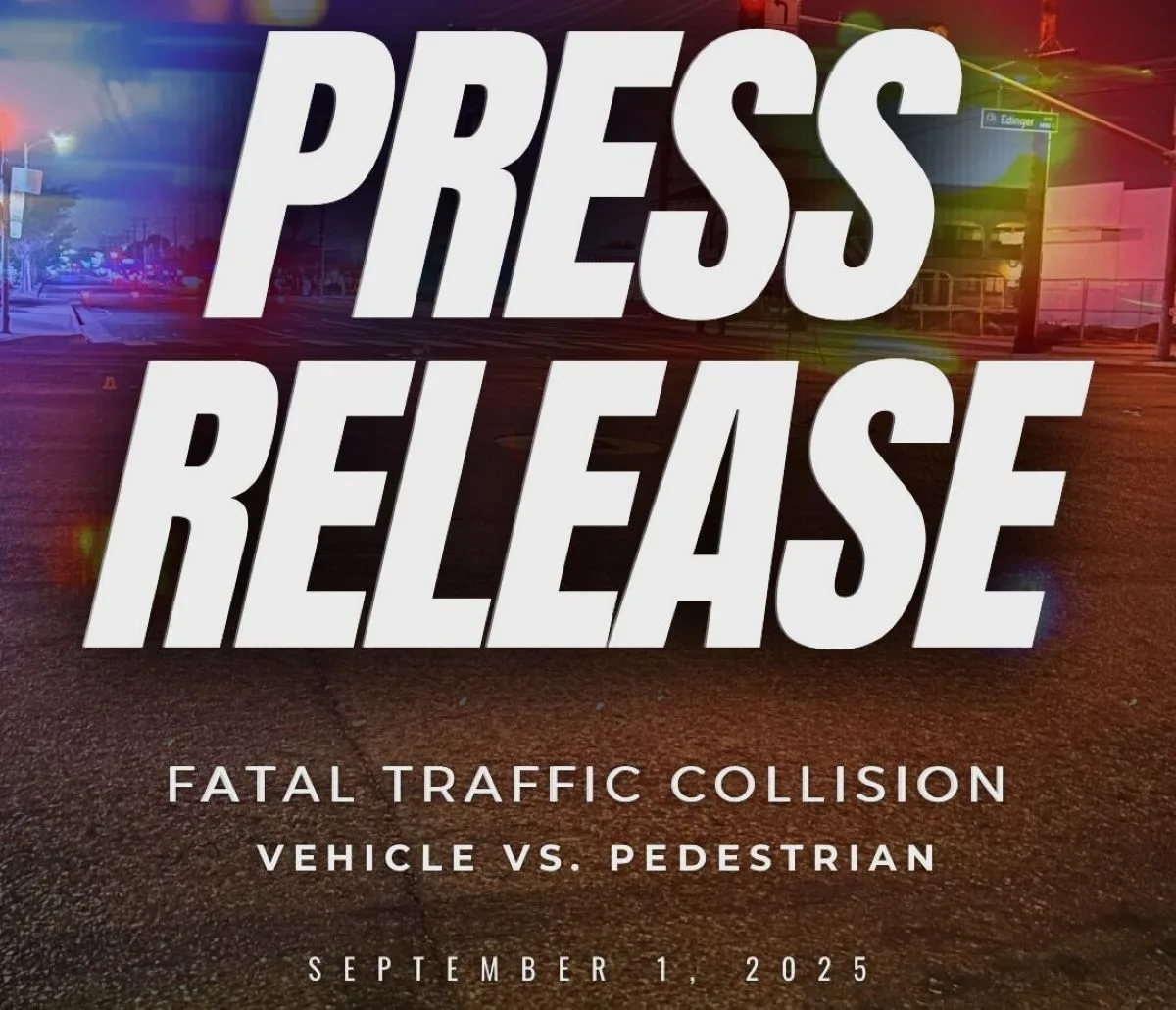A woman was struck by a vehicle on Sunday morning, August 31, 2025, and she was later pronounced deceased at a local hospital, according to the Santa Ana Police Department (SAPD).
On August 31, at approximately 9:54 p.m., the SAPD received multiple reports of a traffic collision near the intersection of Edinger Avenue and Grand Avenue.
Police officers, along with Orange County Fire Authority (OCFA) firefighters, responded to the scene and determined the collision involved a pedestrian and a vehicle.
The pedestrian, a woman whose identity is being determined by the Orange County Coroner’s Office, was transported to a local hospital by OCFA.
Despite life-saving efforts, she succumbed to her injuries.
Based on the preliminary investigation, it appears that the woman was walking westbound on Edinger Ave. when she was struck by a vehicle traveling northbound.
The driver of the vehicle remained at the scene, cooperated with the investigation, and did not appear to be under the influence of alcohol or drugs.
The Santa Ana Police Department’s Collision Investigations Unit (CIU) is investigating this incident.
Anyone with information is asked to contact Detective J. Martinez at (714) 245-8207 or the Santa Ana Police Department’s Traffic Division at (714) 245-8200.
In California, pedestrian fatalities remain a serious concern. In 2023, there were 1,106 pedestrian deaths, a decrease of about 8.8% from 2022, which saw 1,213 fatalities. Despite the drop, the numbers are still high, reflecting the ongoing risks pedestrians face, especially in urban areas with heavy traffic.
The legal repercussions for drivers involved in fatal pedestrian accidents depend heavily on the circumstances:
- Negligence is key: California law determines fault based on negligence. If a driver fails to exercise reasonable care—such as speeding, ignoring traffic signals, or being distracted—they can be held liable for the accident.
- Criminal charges: If the driver was under the influence, driving recklessly, or fled the scene, they could face criminal charges such as vehicular manslaughter or DUI-related homicide.
- Civil liability: Even if no criminal charges are filed, the driver may still face a wrongful death lawsuit from the victim’s family. This can result in significant financial compensation for damages like medical expenses, funeral costs, and emotional suffering.
- Shared fault: California follows a comparative fault rule, meaning if the pedestrian was also negligent (e.g., jaywalking), the driver’s liability may be reduced proportionally.
In the case mentioned above, since the driver stayed at the scene, cooperated with police, and showed no signs of impairment, they may not face criminal charges. However, the final determination will depend on the full investigation by the Collision Investigations Unit.
